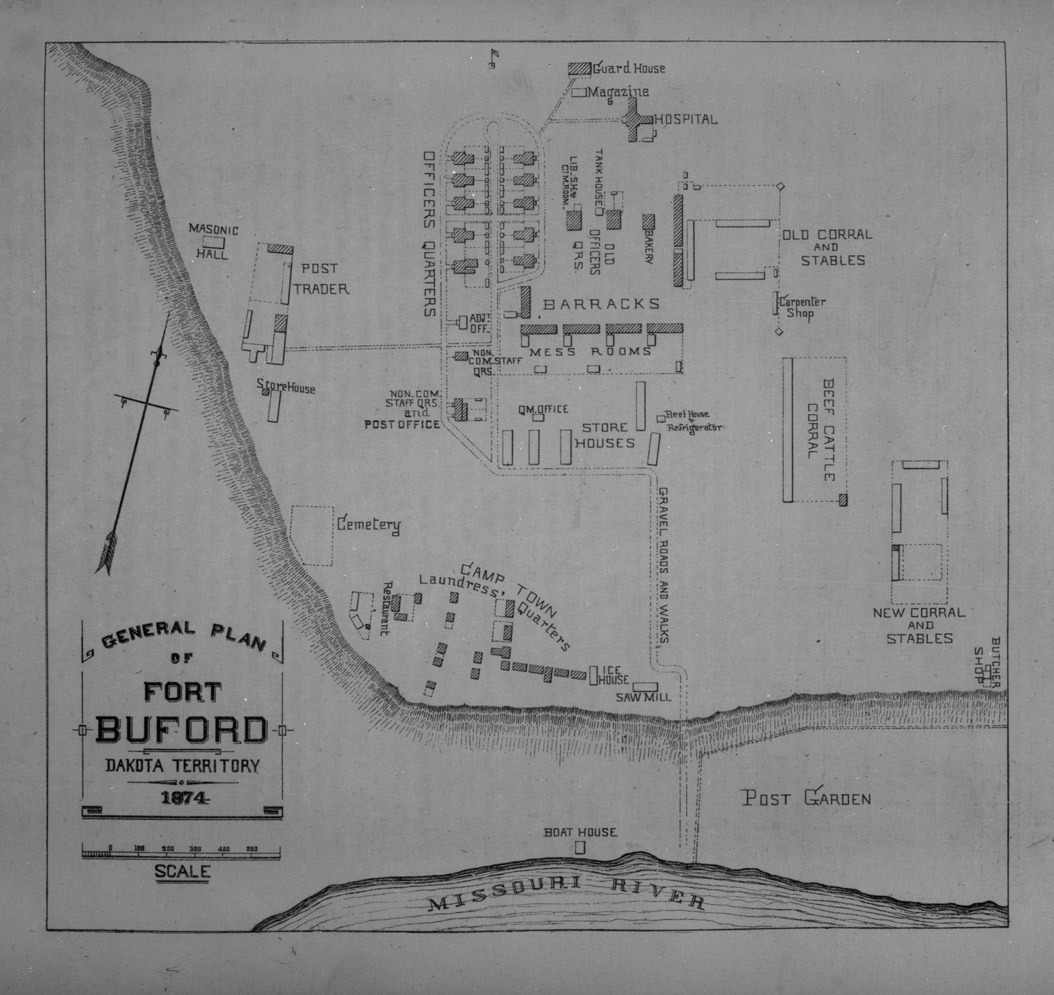Life at an Army post in Dakota Territory was male dominated, but the fort’s population was not exclusively male. Officers’ wives often accompanied their husbands to a frontier post and raised their children in the comforts of the officers’ community. Officers’ wives, however, were not employed in the Army. They did not draw rations (food) or have assigned housing. Even if the post had no school, it was considered improper for an officer’s wife to teach the post children in her home.
The other women on an Army post were the laundresses. These were the women who washed clothes for the soldiers. These women were enrolled (not enlisted) and received rations, housing, and medical care. Usually they were married to enlisted men. If not married, a laundress would be the center of the soldiers’ attentions until she decided to marry.
Soldiers paid laundresses from their own paychecks. A laundress’s pay varied from fort to fort, but in the 1870s, soldiers paid between $1 and $4 per soldier per month to have their laundry washed. These were very good wages, but it was very hard work. Laundresses received more income each month than the enlisted soldiers she washed for. Most soldiers did not make the equivalent of a laundress’s pay until they reached the rank of sergeant. A laundress might earn extra pay if she was hired to wash for an officer’s wife, too.

At Fort Stevenson in 1870, the commanding officer set the price for laundry. Soldiers paid $1 per month for laundry. For that price, the laundress would wash 2 shirts, 2 pairs of drawers (underwear), and 2 towels per week. An officer, however, might pay as much as $5 per month for laundry services.
Each laundress washed for about 20 soldiers. The laundress traveled with the company or regiment she was attached to. Like most soldiers, she might live and work at several different posts. In addition to laundry, she might do some mending or sewing. In some cases, she might be asked to provide medical nursing care to sick soldiers or to other women at the post.
Though laundresses lived and worked in separate quarters–sometimes called Soapsuds Row- they had an important social role in the fort’s community. (See Image 10.) When soldiers held a dance at the fort, the laundresses were invited, even if officers and their wives also attended. However, most of their social relationships with the officers’ wives took place in the officers’ kitchens when the laundress returned clean clothes to the officer’s home. Laundresses often carried gossip from one home to another and from the officers’ homes to the enlisted men’s quarters.
Washing clothes was hard work. The laundress had to make her own soap from wood ashes or lye mixed with rendered (heated) fat (from a butchered pig or cow.) She had to haul water to her kettles and heat the water over a wood fire. She often chopped wood to heat the water. Soldiers’ clothes were heavy woolens that had to be scrubbed on a washboard. Soldiers also asked the laundress to wash their wool blankets once or twice a year. These blankets were large and when heavy with water might weigh eight pounds. Once the clothes were washed and dried, the laundress also had to iron the woolen blouses (soldiers’ jackets) and trousers. Ironing meant heating and re-heating a heavy iron on a wood stove.
In June 1883, the Army decided to discontinue the role of laundresses. They were no longer authorized to received rations and housing. Some regiments continued the tradition, but official women’s work in the Army had ended until after World War I.
Why is this important? Working class women had few choices in the kind of work they did in the 19th century. They might have a job cooking, cleaning, or doing laundry on a farm or in a city home. They were paid in those situations about $1 to $2 per week plus room and board. Doing the same job in the Army not only gave them a better rate of pay, but often better living and working conditions. The Army did not tolerate abuse of women as workers or wives. A laundress could make a good marriage with a soldier, too. Their children would grow up in the Army and have the security of life at an Army post.


